There are significant differences in the availability of fibre-optic connections in Finland depending on the area and residential building type. The availability of fibre-optic connections needs to be improved in urban small-house areas, in particular. Consumers continued to consider the costs of fibre-optic connections too high, and demand did not necessarily meet supply. The total amount of investment in fibre-optic connections has not increased in recent years. Some effort needs to be put into evening out differences based on area and residential building type.
Fibre-optic technology provides users with fast and reliable broadband connections allowing for uninterrupted use of all online and TV services. The significance of the properties of fibre-optic technology will become increasingly important as services become more versatile and network requirements more demanding. Fibre-optic connections always provide network speeds of at least 100 Mb. At the end of 2019, 38% of all households in Finland had access to fibre-optic connections.
The fibre-optic connection review (Valokuitukatsaus 2020) by the Finnish Transport and Communications Agency Traficom examines the availability and number of fixed fibre-optic broadband connections, consumer needs as well as investments and the general price level.
Fibre-optic connections scarce in urban small houses
Almost one million fibre-optic connections were used in Finland at the end of 2019. Their number has nearly doubled in three and a half years. Twenty-six per cent of all Finnish buildings had access to a fibre-optic connection. Availability was distributed unevenly: only 25 per cent of attached houses and small houses had fibre-optic connections, whereas for residential blocks of flats the amount was 43%.
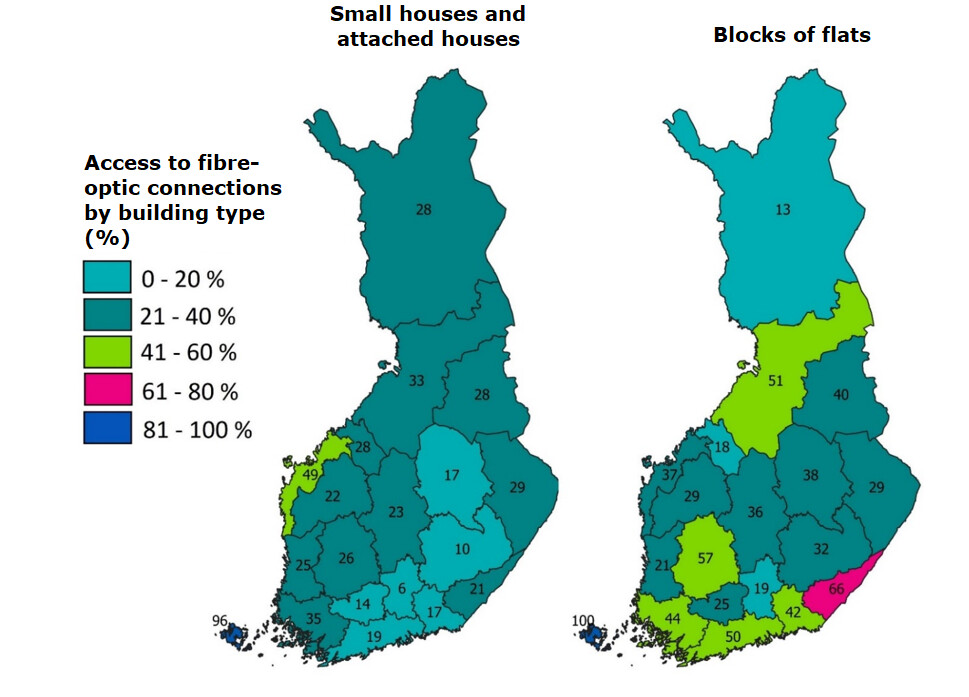
The proportion of buildings with fibre-optic connections was compared between different regional categories. The categories are: urban municipalities (58 pcs), rural municipalities (187 pcs) and semi-urban municipalities (65 pcs). This statistical grouping of municipalities is implemented by Statistics Finland.
Only 17% of small houses in urban municipalities had access to fibre-optic connections, whereas the situation was much better in rural municipalities, where up to 38% of small houses had fibre-optic connections. The availability of fibre-optic connections in residential blocks of flats in these areas was nearly identical.
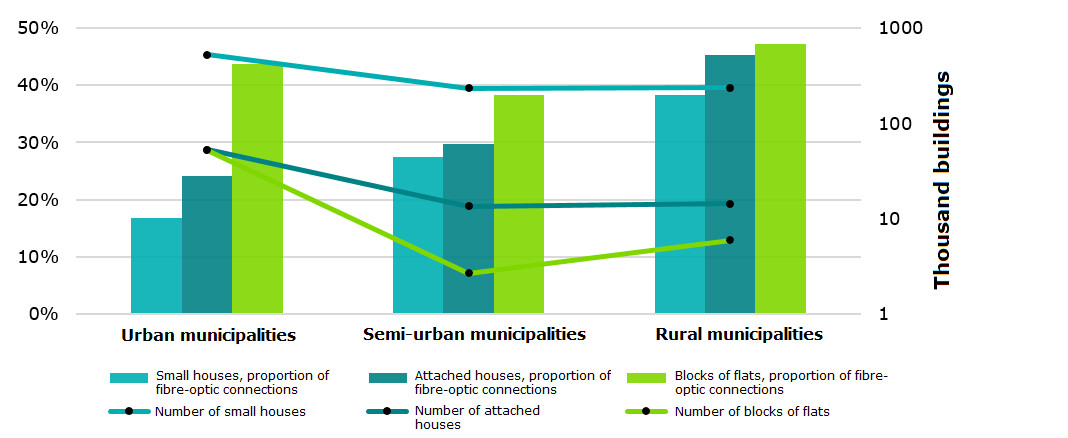
Consumers continue to consider fibre-optic connections costly
The consumer questionnaire implemented by Traficom in spring 2020 surveyed how much the respondents were prepared to pay for access to a fibre-optic connection. According to an assessment by Traficom, a fibre-optic connection costs 1,500–2,000 euros on average. Only 9% of the respondents were prepared to pay the average price for the connection. A majority felt that the price should be less than 1,000 euros.
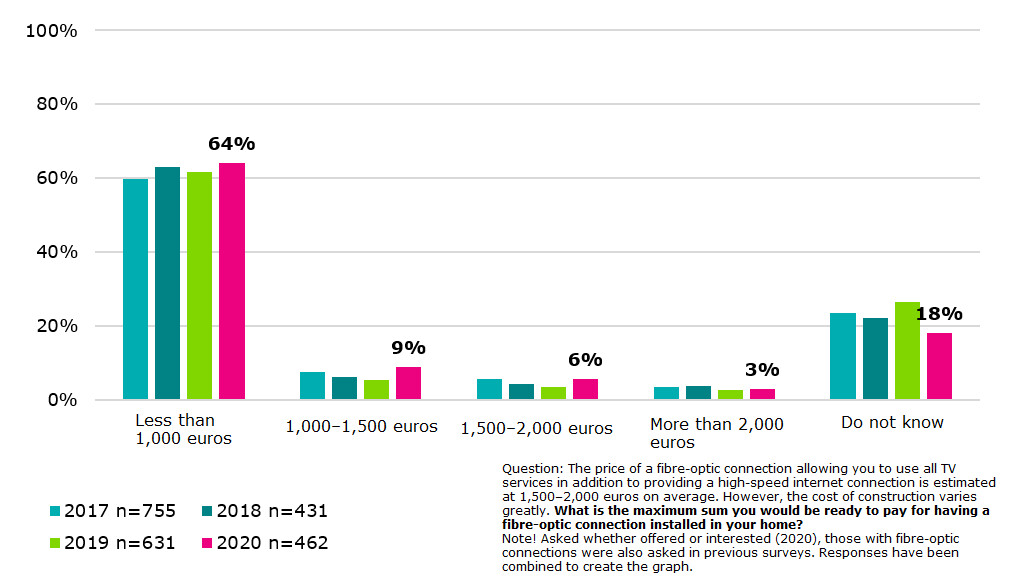
The second consumer survey implemented in early 2020 examined the time span in which the respondents thought they themselves or their household would start using a fibre-optic connection or similar fixed connection that can be used to run all kinds of online services smoothly. One fourth of the respondents said that they already have the use of such a connection and one fourth believed that they would have the use of such a connection in no more than three years. On the other hand, a little over one fifth of the respondents did not think that they would ever have the use of such a reliable, fixed connection.
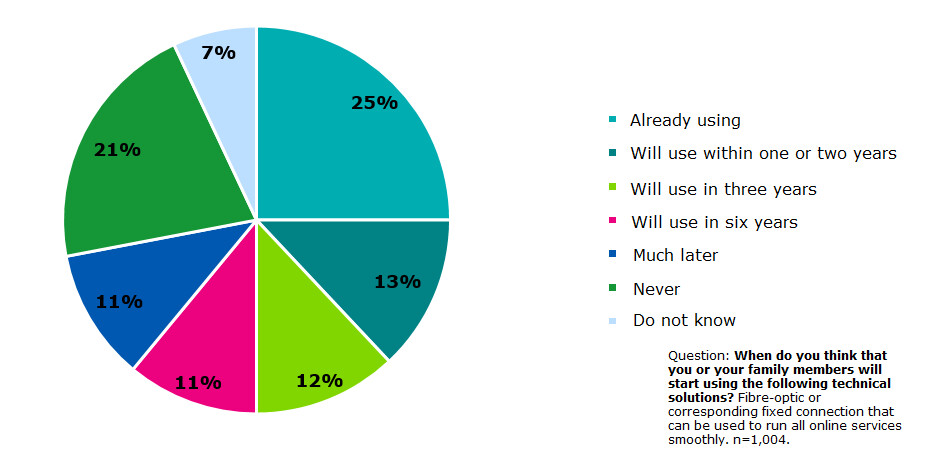
Investments in fibre-optics have remained the same
Investments in fibre-optics have been more than 170 million euros each year for the past two years. During the past two years, investments in fibre-optics in the access network and local line network have comprised nearly 70% of all investments in fibre-optic connections. The remaining 30% of investments into fibre-optics go towards the core network and base station connections. Investments in fibre-optics make up roughly two thirds of investments in fixed networks and a little less than 30% of the total investments in telecommunications activity.
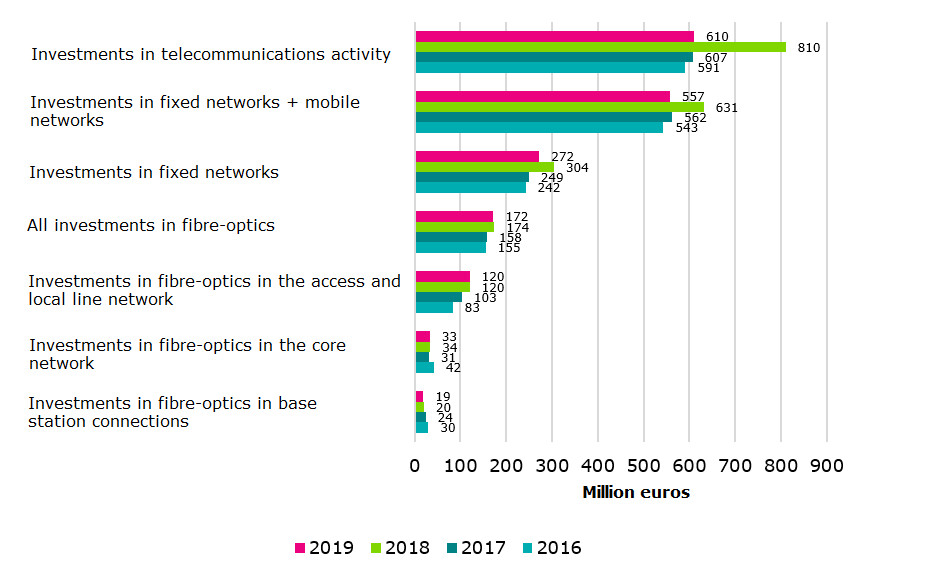
As a rule, the 1,000 Mb fibre-optic connection is the fastest fibre-optic connection offered to consumers. Average retail prices have decreased from 58 euros to 46 euros within the last two years in the 1,000 Mb category. Speed-based categories are mainly based on downloading speed, i.e. the connection’s capacity to receive data, whereas uploading speed refers to the capacity to send data. Connections with both downloading and uploading speeds of at least 100 Mb cost 36 euros per month on average. The prices of these connections have seen a downwards trend in the last two years. The technology used in price comparisons in this speed category is always fibre-optics.
For comparison’s sake, Figure 6 also illustrates the average monthly prices for 100 Mb and 10 Mb connections. Connections with speeds of 100 and 10 Mb are usually implemented through fibre-optic, cable TV and copper cable networks.
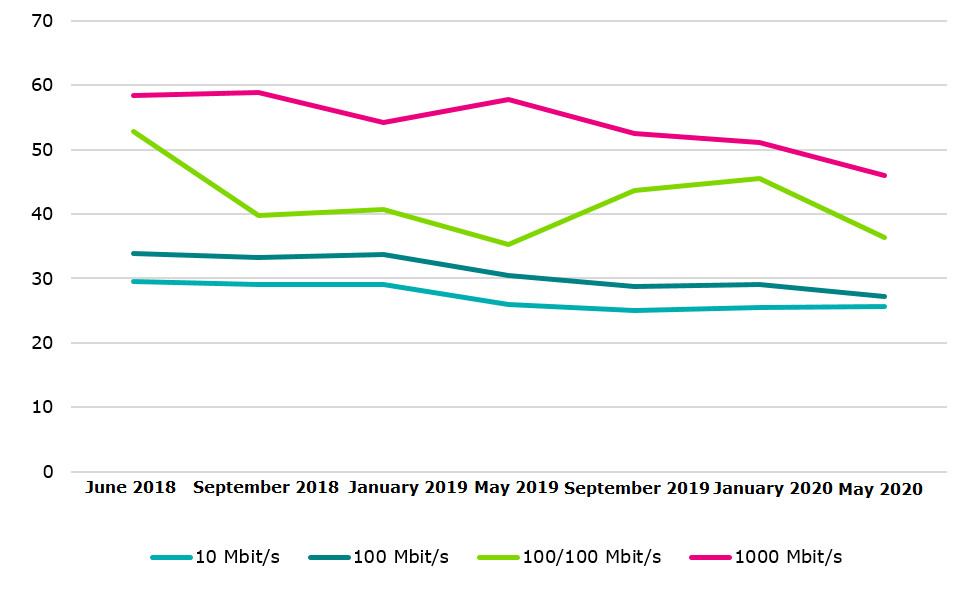
Enquiries and further information
Fibre-optic connection review 2020 (in Finnish)
Joonas Sotaniemi, Communications Market Specialist, joonas.sotaniemi(at)traficom.fi, tel. +358 (0)29 539 0309
Marja Heinonen, Communications Market Specialist, marja.heinonen(at)traficom.fi, tel. +358 (0)29 539 0306 (consumer research)